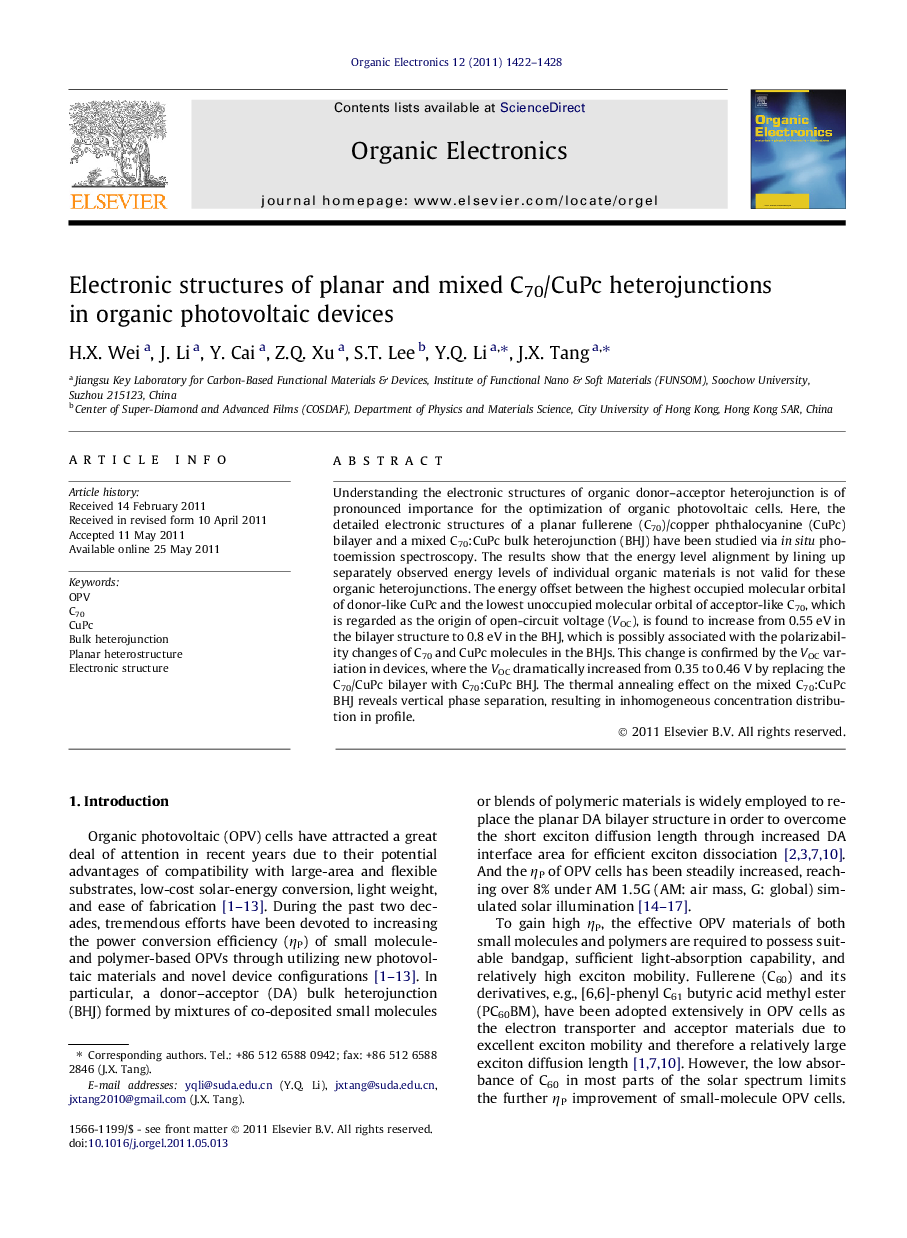| Article ID | Journal | Published Year | Pages | File Type |
|---|---|---|---|---|
| 1267673 | Organic Electronics | 2011 | 7 Pages |
Understanding the electronic structures of organic donor–acceptor heterojunction is of pronounced importance for the optimization of organic photovoltaic cells. Here, the detailed electronic structures of a planar fullerene (C70)/copper phthalocyanine (CuPc) bilayer and a mixed C70:CuPc bulk heterojunction (BHJ) have been studied via in situ photoemission spectroscopy. The results show that the energy level alignment by lining up separately observed energy levels of individual organic materials is not valid for these organic heterojunctions. The energy offset between the highest occupied molecular orbital of donor-like CuPc and the lowest unoccupied molecular orbital of acceptor-like C70, which is regarded as the origin of open-circuit voltage (VOC), is found to increase from 0.55 eV in the bilayer structure to 0.8 eV in the BHJ, which is possibly associated with the polarizability changes of C70 and CuPc molecules in the BHJs. This change is confirmed by the VOC variation in devices, where the VOC dramatically increased from 0.35 to 0.46 V by replacing the C70/CuPc bilayer with C70:CuPc BHJ. The thermal annealing effect on the mixed C70:CuPc BHJ reveals vertical phase separation, resulting in inhomogeneous concentration distribution in profile.
Graphical abstractFigure optionsDownload full-size imageDownload as PowerPoint slideHighlights► Electronic structures of planar and mixed C70/CuPc heterojunctions are characterized. ► Different energy offsets are observed in these two heterostuctures. ► Annealing induces vertical phase separation in the C70:CuPc mixture.
